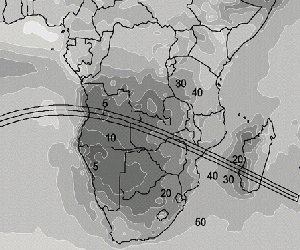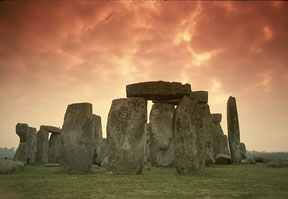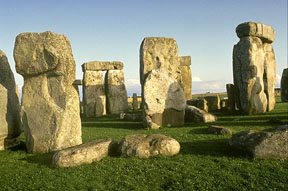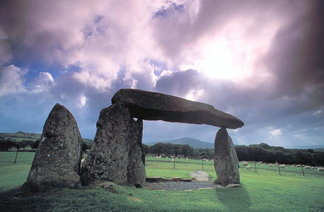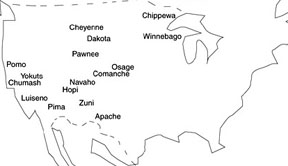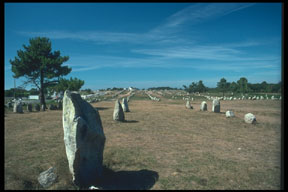Click on image for full size
The Summer Solstice
Let's pretend, for the moment, that you're the person standing on the Earth in the picture to the left, living in Topeka, Kansas, around 40° N latitude. The picture on the left shows the view from the solar system (upper panel), and from on the surface of the earth (lower panel). Notice that some of the same features are labelled on each panel.The upper panel shows that on the summer solstice (which occurs around June 21), the northern half of the Earth is tilted towards the Sun. Notice that the Sun is north of the equator. For you in Topeka, the altitude of the Sun at noon is 73.5°, which is pretty high in the sky. In fact, that is as high as the Sun ever gets at that latitude. It has been getting higher and higher in the sky since the winter solstice and through the vernal equinox. The bottom panel shows how the Sun moves through the sky for someone standing on the ground in Topeka.
So in general, the northern hemisphere is getting more direct sunlight, which heats the Earth most efficiently, than the southern hemisphere. This is summer for people in the northern hemisphere. During the summer, the Sun is also above the horizon longer than it is during the winter. The summer solstice is the longest day of the year.
At this same time, the southern half of the Earth is tilted away from the Sun. If you were living in Neuquen, Argentina (roughly -40° S latitude) you would be bundled up for the winter.
How high the Sun gets in your sky, and how long it is above the
horizon during the day, depend not only on the season, but also on
your latitude.







